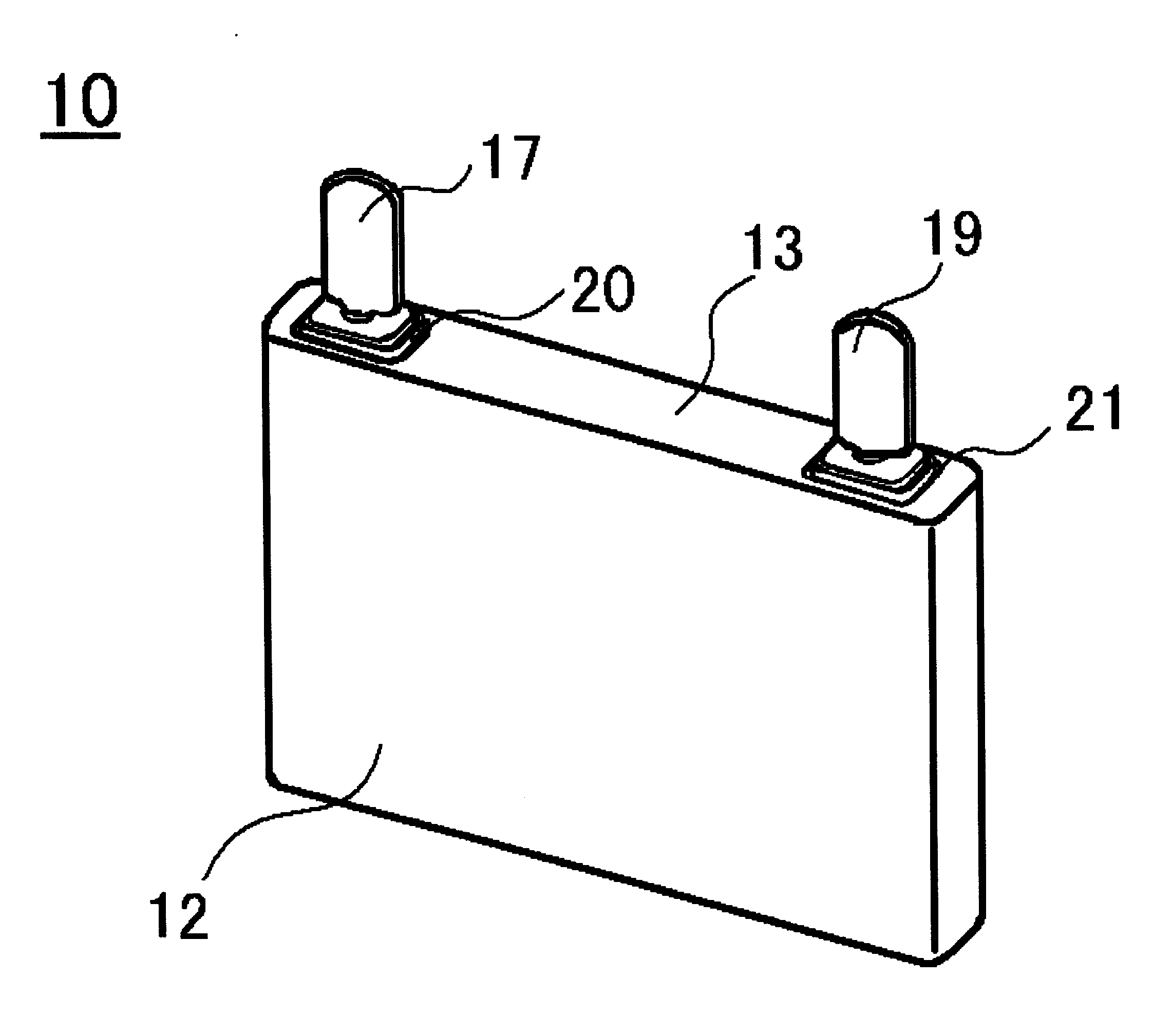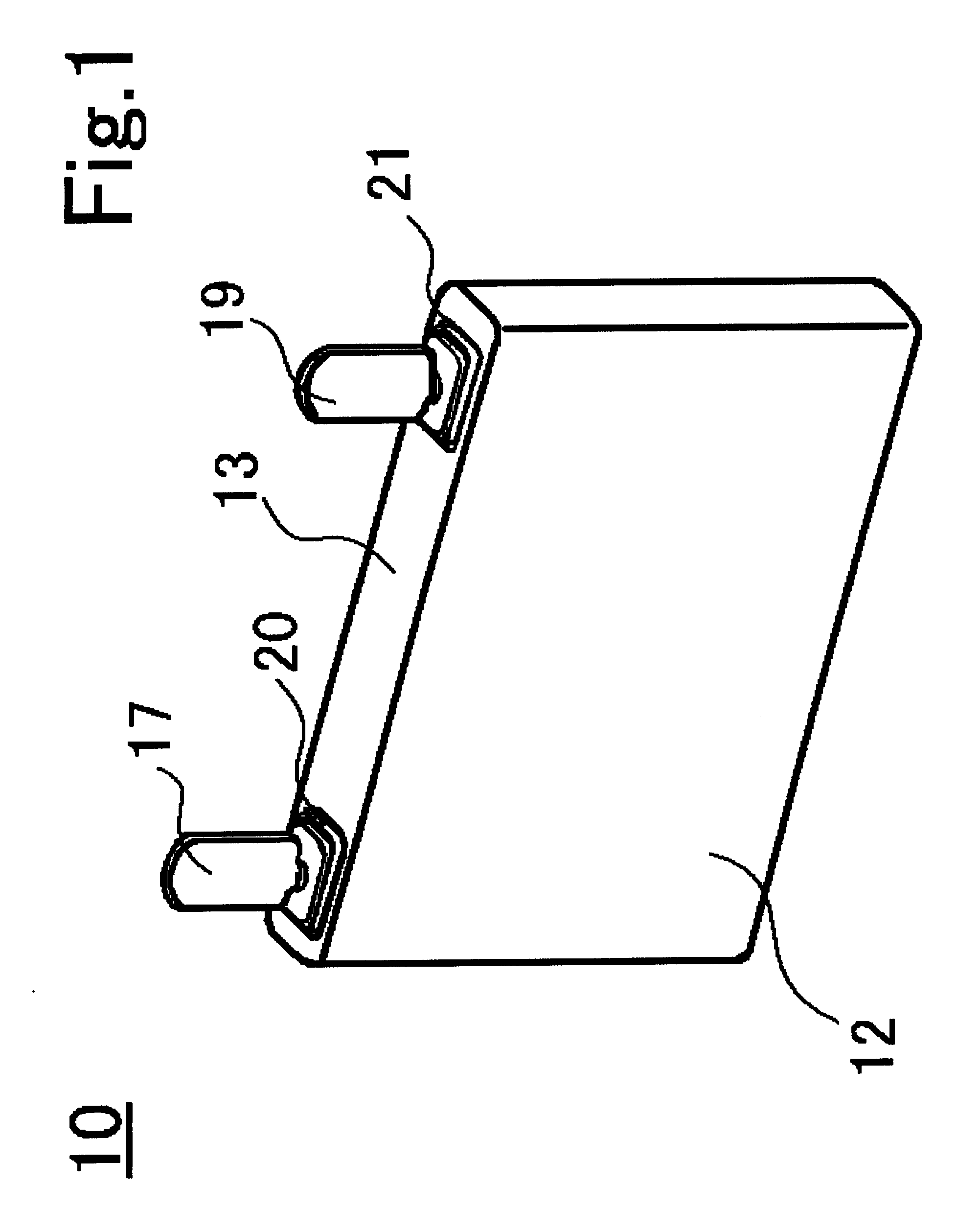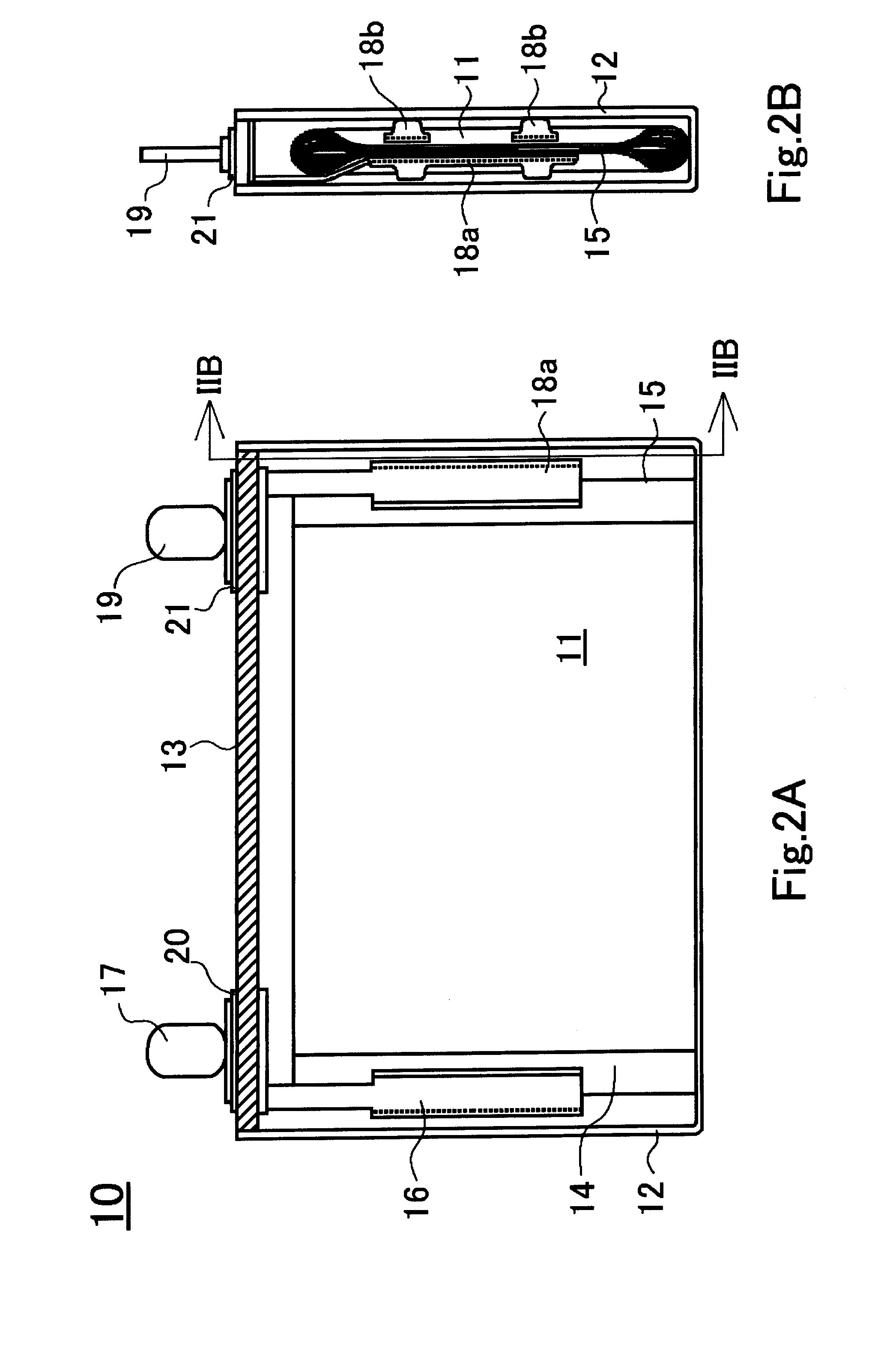Method for producing sealed battery
a technology of sealed batteries and manufacturing methods, applied in the direction of cell components, manufacturing tools, cell component details, etc., can solve the problems of unsuitable welding conditions, femtosecond laser generators, and difficult to maintain a proper welding condition in an unsteady area
- Summary
- Abstract
- Description
- Claims
- Application Information
AI Technical Summary
Benefits of technology
Problems solved by technology
Method used
Image
Examples
first embodiment
Welding Start Region
[0056]The welded state in a welding start region in a method for producing a sealed battery in a first embodiment of the invention will be described with reference to FIGS. 3A to 3D. FIG. 3A is an enlarged plan view of a welding start region in the first embodiment, FIG. 3B is an oblique cross-sectional view immediately after the start of welding, FIG. 3C is a schematic cross-sectional view showing heat transfer, and FIG. 3D is an oblique cross-sectional view of the welding start region.
[0057]In the welding start region of a sealed battery of the first embodiment, as shown in FIG. 3A and FIG. 3B, after the outer can 12 is fitted to the sealing plate 13, firstly, a welding start region 31A in a fitting portion 30 between the outer can 12 and the sealing plate 13 is irradiated with a laser beam LB from CW laser welding equipment (not shown) while pulse-modulating the beam, and the pulse-modulated laser beam LB is output for scanning along the fitting portion 30 bet...
second embodiment
Welding Start Region
[0073]The method for producing a sealed battery in the first embodiment shows an example in which the welding start region 31A is the fitting portion 30 between the outer can 12 and the sealing plate 13. However, even when a laser beam is output for scanning at a constant speed while pulse-modulating the output power of the laser beam in the welding start region 31A, a certain amount of time is required until the temperature of the sealing plate 13 becomes almost the same as that of the outer can 12. Thus, during that time, a welding defect may be caused on the fitting portion 30 in the welding start region 31A
[0074]Therefore, in a method for producing a sealed battery in a second embodiment of the invention, the welding start region is set on the sealing plate. The method for producing a sealed battery in the second embodiment will be described using FIGS. 5A to 5C. FIG. 5A is an enlarged plan view of a welding start region in the second embodiment, FIG. 5B is a...
third embodiment
Welding Stop Region
[0081]The welded state in a welding stop region in a method for producing a sealed battery in a third embodiment of the invention will be described with reference to FIGS. 6A to 6C. FIG. 6A is an enlarged plan view of a welding stop region in the third embodiment, FIG. 6B is an oblique cross-sectional view of the welding stop region, and FIG. 6C is a schematic cross-sectional view of the melted area after the completion of welding.
[0082]A welding stop region 34 in the method for producing a sealed battery in the third embodiment shown in FIG. 6A shows an area that is overlapped with the area corresponding to the welding start region 31A in the method for producing a sealed battery in the first embodiment shown in FIG. 3A. That is, as shown in FIG. 3B, when the laser beam LB is output for scanning around the fitting portion at a constant output power so as to form a continuous weld mark 33D and reaches the welding stop region 34, the laser beam LB is output while p...
PUM
| Property | Measurement | Unit |
|---|---|---|
| thickness | aaaaa | aaaaa |
| thickness | aaaaa | aaaaa |
| thickness | aaaaa | aaaaa |
Abstract
Description
Claims
Application Information
 Login to View More
Login to View More - R&D
- Intellectual Property
- Life Sciences
- Materials
- Tech Scout
- Unparalleled Data Quality
- Higher Quality Content
- 60% Fewer Hallucinations
Browse by: Latest US Patents, China's latest patents, Technical Efficacy Thesaurus, Application Domain, Technology Topic, Popular Technical Reports.
© 2025 PatSnap. All rights reserved.Legal|Privacy policy|Modern Slavery Act Transparency Statement|Sitemap|About US| Contact US: help@patsnap.com



